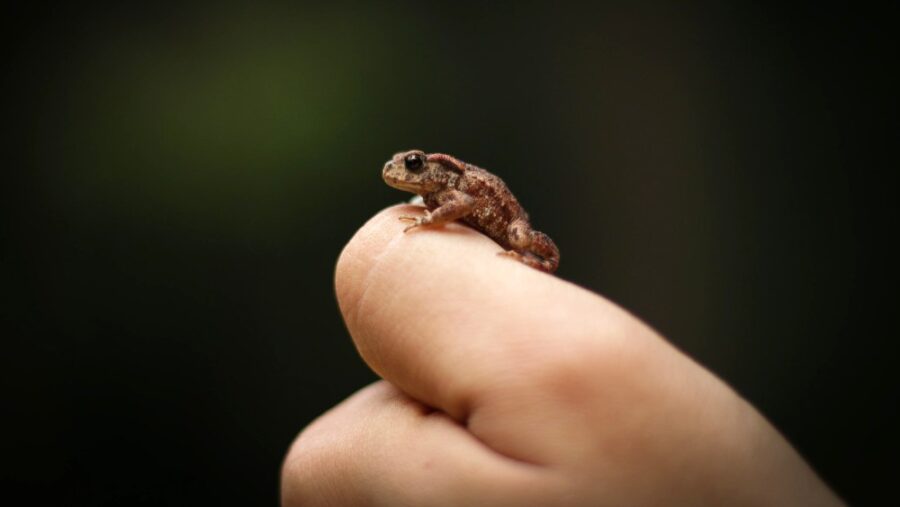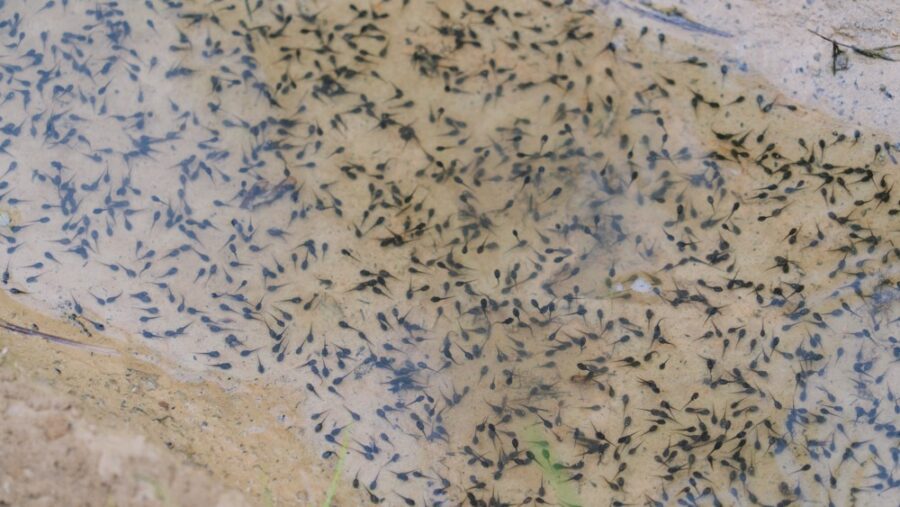Smallest Fanged Frog Species Ever Discovered

When you think of frogs, fangs aren’t typically the first thing to come to mind. However, the lush, volcanic hills of Sulawesi, Indonesia serve as the home for more than a handful of fanged species of frogs.
The frog species Limnonectes larviparous has even been spotted there, and they are the only frog species in the world that actually gives birth to live tadpoles instead of laying eggs first.
Recently, the gorgeous and mysterious island of Sulawesi has revealed another one of its most intriguing secrets to the world in the form of the planet’s smallest fanged frog, Limonectes phyllofolia. Limonectes phyllofolia is a traditional amphibian egg layer, and for good reason.
Frogs usually lay their eggs in or near a water source to keep the jelly outside coating from drying out while their babies grow.

This fanged frog, unlike most frogs, doesn’t make its home in or even beside a natural water source. When scientists discovered Limonectes phyllofolia, they discovered it within the rainy forest of the island.
Reproducing is a dangerous game when you’re near a water source, but frogs who lay their eggs inland have a different sort of battle on their hands when it comes to keeping their eggs safe as they develop.
Contrary to the norm, the frog’s lower jaw consists of two small and protruding fangs.
A team of herpetologists from the U.S. and Indonesia said that they tuned into the new fanged frog species after discovering groups of black frog eggs laid on leaves and mossy boulders several feet off of the ground. Finding frog eggs in such a strange place immediately drew the scientists’ attention.
Frogs usually lay their eggs in or near a water source to keep the jelly outside coating from drying out while their babies grow. Soon after discovering the new fanged frog eggs, the herpetologists caught a glimpse of several small brownish frogs charged with protecting the nests of eggs.
The newest species discovered only weighs about as much as a dime, coming in around two grams.
The fanged guard frogs not only protect the egg nests from being invaded by other creatures, but they regularly coat their eggs with essential compounds that keep them moist and free of bacteria or fungi. Even more outside the norm, the egg guardians were all male frogs.
When the scientists had a chance to look closer at the newly discovered fanged frog species, they found that they had a set of tiny teeth on their upper jaw. Once again, contrary to the norm, the frog’s lower jaw consists of two small and protruding fangs.
The Indonesian island of Sulawesi is home to other fanged frogs, but Limonectes phyllofolia (meaning leaf-nester) is very small in comparison. Sometimes called saber-toothed frogs, the other fanged frogs on the island weigh in at around two pounds. The newest species discovered only weighs about as much as a dime, coming in around two grams.
Fanged frogs in Southeast Asia originally evolved their fangs to use as weapons in the battle for territory, food, or mating. The frogs that nest near a major waterway have to battle for the best egg-laying spots and use their fangs to crunch into various food sources such as crabs or centipedes.
Limonectes phyllofolia may have only developed tiny fangs due to their location. These fanged frogs don’t have to have fangs big enough to chew on a crab, as their food source is comprised mostly of small bugs. There are also not very many frog species that lay their eggs amongst the leaves of the forest. With less competition, there is less of a reason to grow huge fangs.
Source: PLOS












